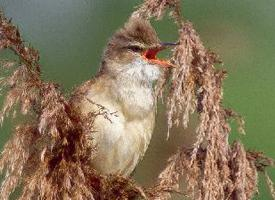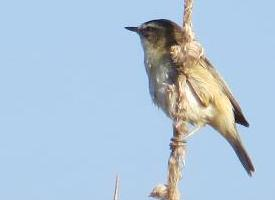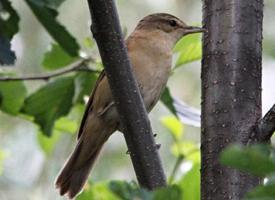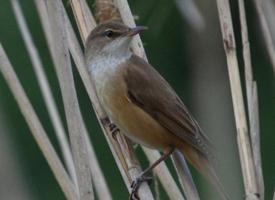
Váhy a míry
| Délka | od 12,5 do 13 cm |
|---|
Stav ohrožení
| Ohrožen |
Popis zvířete
The Marsh Warbler (Acrocephalus palustris) is a small, yet fascinating bird that inhabits the dense reed beds and marshy areas primarily across Europe and parts of western Asia. This bird is renowned for its incredible vocal abilities and its remarkable migratory patterns. With a length of about 12.5 to 14 cm and weighing approximately 11 to 20 grams, the Marsh Warbler is a testament to the saying, "great things come in small packages."Physically, the Marsh Warbler exhibits a rather unassuming appearance, which aids in its camouflage amongst the dense foliage of its habitat. Its upper parts are generally an olive-brown color, blending seamlessly with the reeds and bushes it frequents. The underparts are a paler buff or whitish color, providing a subtle contrast. One of its distinguishing features is its relatively plain face, marked by a faint supercilium (eyebrow-like line) that is less pronounced than in many of its congeners. Its legs are a pale pinkish or brownish color, and it possesses a fine, pointed beak adapted for insectivory.
However, it is the Marsh Warbler's vocal prowess that truly sets it apart. This species is a polyglot of the bird world, capable of mimicking the calls and songs of a wide array of other bird species. Its repertoire is astonishingly diverse, including the songs of up to 200 different species, ranging from other warblers to even birds of prey and mechanical noises. This mimicry serves various purposes, including territory establishment, attracting mates, and possibly confusing predators. The complexity and beauty of its song make it a subject of much interest among ornithologists and birdwatchers alike.
Breeding primarily in central and eastern Europe, the Marsh Warbler embarks on an arduous journey to sub-Saharan Africa to spend the winter. This migratory behavior is a testament to its adaptability and resilience, navigating vast distances across varied landscapes and climates.
The nesting habits of the Marsh Warbler are as meticulous as its vocal performances. It constructs a deep, cup-shaped nest woven from grass and plant fibers, often suspended between stems or branches in dense vegetation close to the ground. The female typically lays between 3 to 6 eggs, which are incubated for about 13 to 15 days. Both parents are involved in feeding the brood, showcasing a strong parental investment in the survival of their offspring.
Despite its widespread range, the Marsh Warbler faces threats from habitat loss and degradation, primarily due to agricultural expansion and wetland drainage. Although currently listed as Least Concern by the IUCN, ongoing conservation efforts are essential to ensure that this remarkable species continues to thrive and fill the marshlands with its eclectic symphony.
In conclusion, the Marsh Warbler (Acrocephalus palustris) is a small bird with a big personality. Its unassuming appearance belies its extraordinary vocal abilities and complex behaviors, making it a fascinating subject of study and a cherished presence in its natural habitat. As it continues to navigate the challenges of migration and habitat changes, the Marsh Warbler remains a symbol of the resilience and beauty of the natural world.
Podobná zvířata
Nové fotografie zvířat
Top 10 zvířat
- Chinese water dragon (Physignathus cocincinus)
- Galápagos tortoise (Geochelone nigra complex)
- Dolphin gull (Leucophaeus scoresbii)
- Japanese macaque (Macaca fuscata)
- Colombian red howler (Alouatta seniculus)
- Sea urchins (Echinoidea)
- Moustached guenon (Cercopithecus cephus)
- Diana monkey (Cercopithecus diana)
- Common reed warbler (Acrocephalus scirpaceus)
- Common house mosquito (Culex pipiens)


